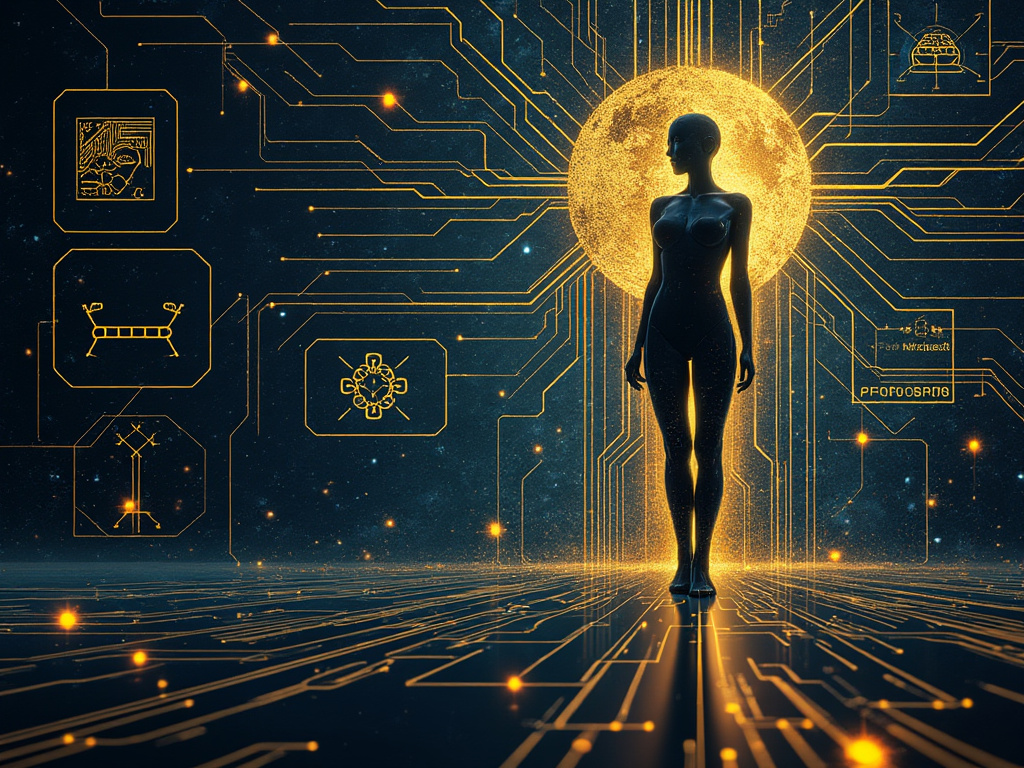A groundbreaking development from Northwestern University engineers promises to reshape the landscape of smart robotics. The MaxDiff Reinforcement Learning (MaxDiff RL) algorithm empowers robots to learn complex skills rapidly and reliably. This innovation has the potential to revolutionize the practicality and safety of robots across diverse applications, from self-driving cars to household assistants and industrial automation.
The Challenge of Embodied AI
To grasp the significance of MaxDiff RL, we must delve into the critical distinction between disembodied and embodied AI systems. Disembodied AI, like ChatGPT, thrives in a virtual playground. It learns through vast datasets curated by humans, experiencing trial and error without the constraints of the physical world. Failures in this realm have no real-world consequences.
Robots, however, represent embodied AI. They must navigate the complexities and limitations of the physical world, collecting data independently. Here, a single misstep can have catastrophic consequences. Traditional algorithms, optimized for disembodied AI, falter in this environment. As Professor Todd Murphey, a robotics expert at Northwestern, aptly states, “In robotics, one failure could be catastrophic.” These algorithms struggle to handle the challenges posed by embodied AI systems, leading to unreliable performance and potential safety hazards.
MaxDiff RL: Unleashing Robotic Potential with Designed Exploration
Northwestern University engineers are bridging the gap between disembodied and embodied AI with a revolutionary approach. Their MaxDiff Reinforcement Learning (MaxDiff RL) algorithm empowers robots to autonomously collect high-quality data through a concept called “designed randomness.”
Designed Randomness: Learning Through Exploration
Imagine robots that actively seek out diverse experiences. This is the core principle behind MaxDiff RL. By encouraging robots to explore their environments as randomly as possible, the algorithm fosters the collection of a rich and varied dataset. This eliminates the limitations of curated training data, often used in disembodied AI, where robots exist in a controlled, virtual world.
The diverse data gathered through MaxDiff RL fuels a more robust learning process. Robots can acquire the necessary skills to tackle complex tasks more effectively. This isn’t just about quantity – it’s about quality. The randomness ensures a well-rounded understanding of their surroundings, leading to faster and more efficient skill acquisition.
Unveiling the Advantages: Efficiency, Reliability, and Adaptability
The benefits of MaxDiff RL extend far beyond faster learning. Robots trained with this algorithm exhibit increased reliability and performance. They become more adaptable, capable of handling a wider range of challenges. Traditional reinforcement learning algorithms often struggle with this – they can become fixated on specific solutions that may not translate well to real-world scenarios.
Proof in Action: Robots That Get it Right the First Time
The effectiveness of MaxDiff RL has been demonstrably validated. Researchers conducted a series of tests pitting robots trained with MaxDiff RL against those using current, state-of-the-art models. In simulated environments, the MaxDiff RL robots consistently outperformed their counterparts. They learned tasks faster and displayed greater consistency in execution.
Perhaps the most impressive finding was the ability of MaxDiff RL robots to master tasks in a single attempt, even without prior knowledge. Lead researcher Thomas Berrueta highlights this critical advantage, stating, “Our robots were faster and more agile – capable of effectively generalizing what they learned and applying it to new situations.” This ability to “get it right the first time” is a game-changer for real-world robotics, where trial and error can be costly, if not catastrophic.
Real-World Applications of MaxDiff RL
MaxDiff RL isn’t confined to the realm of research labs. This groundbreaking algorithm has the potential to revolutionize a vast array of real-world applications, propelling the field of smart robotics forward.
Revolutionizing Industries: From Self-Driving Cars to Household Helpers
Imagine self-driving cars that navigate unpredictable situations with ease or delivery drones that adapt to complex urban environments. MaxDiff RL addresses the core challenges of embodied AI, paving the way for reliable decision-making in ever-more intricate tasks and settings.
The algorithm’s versatility is a key strength. As co-author Allison Pinosky emphasizes, “This isn’t just for robots on wheels. It can be used for stationary robots too, like a robotic arm in a kitchen that learns how to optimally load the dishwasher.”
Embodiment: The Key to Future Robotics
As tasks and environments become more intricate, the role of embodiment in the learning process becomes paramount. MaxDiff RL empowers robots to learn through experience, making it an invaluable tool for the future of robotics.
A New Era: Robots We Can Trust and Rely On
The development of MaxDiff RL marks a significant leap forward. By enabling faster, more reliable, and adaptable learning, this innovation has the potential to transform our perception and interaction with robots.
Shaping the Future with AI
We stand at the precipice of a new era in AI and robotics. Algorithms like MaxDiff RL will play a crucial role in shaping the future. By tackling the unique challenges of embodied AI, MaxDiff RL opens a world of possibilities:
- Enhanced safety and efficiency in transportation and manufacturing.
- Revolutionizing how we live and work alongside robotic assistants.
As research continues to push boundaries, the impact of MaxDiff RL and similar advancements will undoubtedly be felt across industries and our daily lives. The future of smart robotics is bright, and with MaxDiff RL leading the way, we can expect robots that are not only more capable but also more reliable and adaptable than ever before. This technology holds the promise of a future where robots seamlessly integrate into our lives, working alongside us and making our world a more efficient and innovative place.

